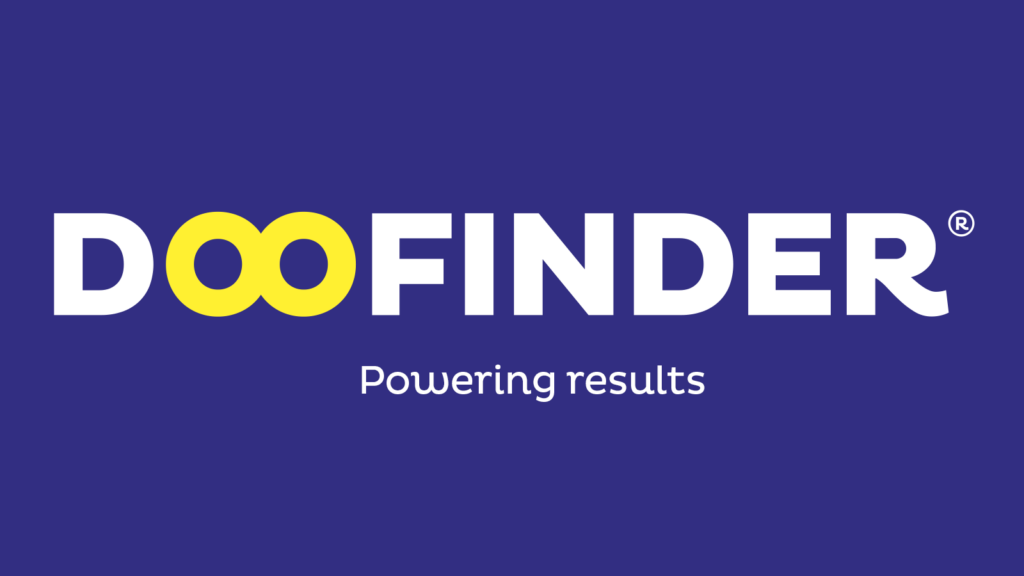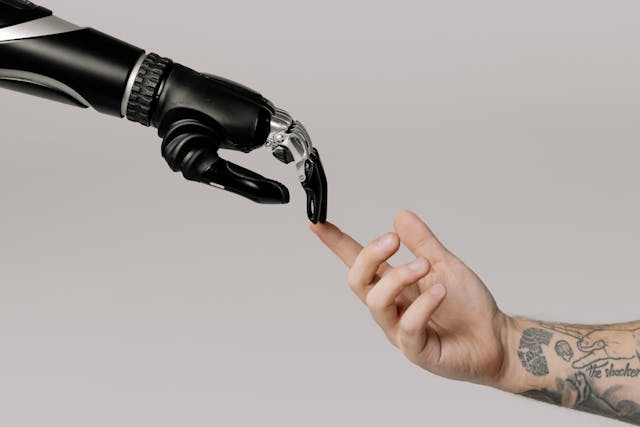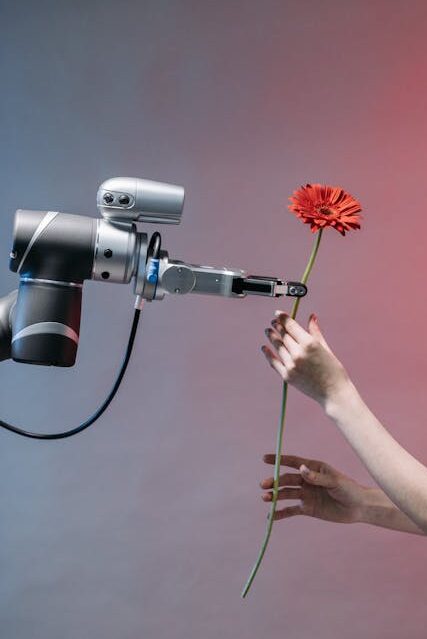The Golden Triangle in Modern Marketing: Data, AI, and Human Creativity
Introduction
It’s been almost two and a half years since we launched Keytrends, and during this time, we’ve had the opportunity to collaborate with a wide variety of marketing teams, from e-commerce to corporations, agencies, startups, media outlets, and some true leaders in their sectors.
This diversity has allowed us to observe, from the inside and with perspective, how the needs and challenges of marketing teams can vary significantly. However, there are patterns that repeat themselves, regardless of the size or type of company, and it is at the intersection of these patterns where a fundamental key to success lies.
By working with so many different teams, we’ve identified that the most effective and scalable strategies in modern marketing are built on three essential pillars: the power of data, the intelligence of AI (both in analysis and content generation), and the unique ability of human creativity. These three elements, when integrated harmoniously, form what we call the Golden Triangle in Modern Marketing, a combination that enhances both efficiency and creativity, achieving high-impact results.
Context about Keytrends and the diversity of marketing teams
Identification of common patterns in modern marketing
Introduction of the Golden Triangle: data, AI, and human creativity
The Data Pillar: The Foundation of Modern Marketing
The Importance of Data for an Effective Strategy
Thank you, ChatGPT, for launching after us. If it had been the other way around, we might be having a very different conversation today. When we launched Keytrends commercially in February 2022, our focus was on data, and that made all the difference. Just a few months later, in November of the same year, the first demo of ChatGPT hit the scene and revolutionized the marketing world with generative AI. At that time, many tools and platforms shifted entirely towards automated content creation, neglecting one of the fundamental pillars for making impactful decisions: data.
We were fortunate that ChatGPT came out after our launch. This allowed us to focus on what really matters for any effective marketing strategy: having solid and accurate data. One of the main problems we observe in marketing teams is the lack of ability to collect and manage all relevant data. This includes not only business and marketing data, but also external data about customer behavior, real-time competition, and historical seasonality, which is key to anticipating trends.


The Process of Data Extraction and Integration
To build a winning strategy, having data is not enough; the key is to have a robust data extraction and integration process. This could mean developing it internally or outsourcing it, but the crucial part is ensuring that teams have access to a real-time updated datalake, ready to be effectively leveraged. The lack of this infrastructure often results in decisions made with incomplete or biased information.
Advantages of a Real-Time Updated Datalake
In our experience, we have seen how many marketing teams struggle to integrate data from different sources or simply don’t have the time or resources to leverage it properly. Having a well-structured and updated datalake is a competitive advantage, as it allows access to valuable real-time insights, improving targeting accuracy and optimizing campaign segmentation.
How Data Fuels Analytical and Generative AI
It is precisely this data foundation that allows analytical AI to function optimally and enables generative AI to produce personalized content at scale with real impact. With this solid base, we are ready to explore how artificial intelligence can transform data into even smarter and more creative strategies.
Analytical AI and Generative AI: Driving Efficiency
The Transformative Role of Analytical AI
Since generative AI has been widely discussed lately, I prefer to start with something equally transformative but perhaps less visible: analytical AI. At Keytrends, this is precisely the pillar we are focusing most of our efforts on. Once we have a solid data foundation and clearly understand how we would manually use that data to deliver value to our clients, the next step is to automate workflows. This means combining mechanisms that relay data based on multiple variables with intelligent systems and agents that process that information, allowing us to generate recommendations almost ‘magically’.

Analytical AI is essentially the engine that processes large volumes of data in real time, identifying patterns, correlations, and opportunities that would otherwise go unnoticed. But what is truly valuable is that it doesn’t just provide data; it turns that information into actionable recommendations, helping marketing teams make faster and more effective decisions.
A concrete example of how this works can be seen with one of our clients in the multiproduct e-commerce sector. The challenge was to improve their content strategy continuously and proactively, rather than reactively. With our analytical AI, we were able to design a system that automatically detects the most searched topics in their sector in real-time, comparing them to the products they already cover or don’t. From this information, the system…
The Impact of Generative AI on Content Creation
Regarding generative AI, it’s hard to add something that hasn’t already been said, as its impact has been truly revolutionary, mainly due to the low learning curve for both using it and developing applications on top of it. In a matter of months, it has become an essential tool for brands, agencies, and marketing professionals looking to scale content creation and enhance personalization to levels never seen before.
One of the most impressive aspects is that the quality of the results, which was initially one of the main critical points, has improved exponentially. This is especially evident in image and video generation models, which are reaching astonishing levels of detail and realism.

At Keytrends, we’re thrilled to be part of this revolution from the inside, helping our clients multiply the amount of content they produce. A key aspect here is that generative AI not only enables massive content generation but does so in a personalized way, tailored to the needs and preferences of each audience. This ability to produce at scale with a high degree of personalization is precisely what makes it such a powerful tool in modern marketing.
A concrete example of its use is how some of the world’s leading content agencies are already generating 70% of their content with AI, reserving the final 30% for the human touch. This combination allows brands to create personalized campaigns for different audience segments with a speed and efficiency that would be impossible to achieve manually.
Content Production at Scale and Personalization
Content production at scale is one of the biggest benefits of generative AI. Brands no longer need to spend weeks or months creating hundreds of pieces of content for their different marketing channels. With AI, they can generate articles, ads, images, videos, and other types of content in a matter of minutes. Additionally, each of these pieces can be personalized to suit different audience groups, adjusting the message, tone, and style based on the available customer or user data.
This is especially useful for multichannel marketing campaigns, where content needs to be adapted for social media, blogs, paid ads, and more. Generative AI not only automates this process but also ensures that the content is consistent and relevant across all customer touchpoints.



Practical Examples of AI Use in Marketing: Automation and AI-Generated Creativity
AI applied to audience targeting has transformed how brands segment their campaigns. Tools like Doofinder, Magnific (Freepik), and Conectiff optimize advertising and personalized searches, improving the relevance of ads and products shown to consumers. Doofinder, for example, enhances internal search in e-commerce through AI, displaying products based on user behavior. In terms of personalization, tools like Magnific (Freepik) allow the creation of high-quality images with their reimaginative upscaler, key for visual campaigns. Conectiff automates omnichannel marketing, ensuring a consistent experience across different platforms.
Human Creativity: The Touch That Emotionally Connects
In a world where artificial intelligence and data dominate much of marketing strategies, human creativity remains the element that makes the difference and emotionally connects with audiences. While AI can produce content at a speed and scale never seen before, it is human creativity that gives meaning, context, and emotion to those messages. This human touch is not only crucial for generating an emotional connection but also for meeting the principles of EEAT (Experience, Expertise, Authoritativeness, Trustworthiness), which are increasingly relevant in evaluating the quality of content in the digital environment.
The Unique Role of Creativity in Marketing
Creativity is not simply a matter of design or style; it is the ability to convey a message that resonates with the audience, evokes an emotional reaction, and ultimately inspires action. In marketing, this is more crucial than ever. In an environment saturated with ads and content, creativity is what allows brands to stand out, create memorable experiences, and build a genuine connection with consumers. Moreover, human intervention is essential to ensure that the content reflects experience, authority, and trust (EEAT), essential factors not only for user engagement but also for improving visibility on search engines like Google.
Throughout marketing history, we have seen iconic advertising campaigns that have not only captured the public’s attention but have also become part of the collective memory. This kind of impact can only be achieved when human creativity is at the helm, developing concepts that touch emotional chords and empathize with people’s needs or desires.


How Human Creativity Complements AI
Although AI has proven to be a powerful tool for optimizing processes, creating content at scale, and personalizing messages, human creativity adds a layer of emotional complexity that artificial intelligence still cannot replicate. Additionally, in an EEAT context, it is human intervention that ensures content is relevant, accurate, and trustworthy—something that AI, on its own, cannot yet guarantee. Humans have the ability to interpret cultural nuances, emerging trends, and emotional factors that are difficult to quantify or predict through algorithms.
AI can suggest or generate multiple variations of a message, but it is the human touch that defines which of those options is the most suitable to connect with the audience, considering factors like tone, context, and cultural relevance. Marketing professionals can also see beyond the obvious and find new ways to tell stories, which enriches campaigns and makes them much more engaging, while also aligning them with EEAT principles. This ensures that the content not only connects with the audience but is also perceived as authentic and trustworthy.
A clear example of this human-AI collaboration is how many brands use generative AI to produce the first draft of an ad, but it’s the human creatives who refine it, adding layers of meaning and personalization that ensure the message not only reaches the audience but also resonates with them in an emotional and authentic way
Synergy Between Data, AI, and Human Creativity: The True Potential
How the Combination of the Three Pillars Enhances Modern Marketing

Each of these elements, on its own, brings immense value to marketing, but it is their complementarity that unlocks their true potential. Data provides the foundation: insights into customers, market trends, and behavioral patterns. AI transforms that data into optimized actions, from content personalization to process automation. Finally, human creativity adds the emotional and narrative touch, essential for making the message resonate with the audience.
For example, imagine a campaign where customer data reveals that a specific segment is interested in an emerging topic. AI can generate multiple versions of content based on that data and optimize the delivery of that content to each segment, adjusting messages and formats in real-time. But it is the human creative touch that ensures that the message aligns with the values and emotions of the target audience, creating an authentic connection.
This approach allows marketing teams to be not only more efficient but also more effective. By leveraging data to better understand their audience, AI to execute more precisely, and human creativity to generate an emotional connection, brands can create much more impactful campaigns.
Key Benefits of Integrating These Elements into a Marketing Strategy
Integrating data, AI, and human creativity into a marketing strategy offers a series of key benefits that can enhance the success of campaigns:
- Enhanced Efficiency: AI enables the automation of repetitive tasks and processes large volumes of data in real time, freeing up time for creative teams to focus on developing innovative ideas. This not only reduces operational costs but also optimizes human resources, allowing for more agile and efficient management.
- Personalization at Scale: Data, combined with AI, allows for massive personalization of every customer interaction. Brands can tailor messages and experiences for each customer based on their behavior, interests, and preferences, improving relevance and significantly increasing return on investment (ROI).
- Improved Decision-Making: With accurate data and AI-driven analysis, marketing teams can make more informed, fact-based decisions, minimizing risks and maximizing the impact of each campaign. This precision translates into more efficient budget allocation, which in turn reduces costs and boosts ROI.
- Emotional Connection: Despite technological advancements, human creativity remains crucial for emotionally connecting with audiences. While AI helps optimize, it’s creativity that gives meaning and relevance to the content, achieving deeper, more authentic connections that drive engagement and conversions.
- Real-Time Adaptability: By combining AI with data, brands can adjust their campaigns on the fly, responding to changes in consumer behavior or emerging trends, keeping them always one step ahead of the competition. This flexibility also helps optimize resources and reduce expenses by avoiding unnecessary investments in strategies that aren’t working.

The Future of Marketing: Towards a Deeper Collaboration Between Humans and Machines
Marketing is rapidly evolving thanks to artificial intelligence (AI) and data analysis, and the future promises an increasingly close collaboration between machines and humans. While today there is much talk about AI copilots assisting marketing teams in decision-making and task execution, at Keytrends, we believe that in many of these tasks, AI will not only accompany but become an autopilot, autonomously managing key operational aspects.
Advances in AI marketing agents allow us to anticipate a future where, for many repetitive and data-driven actions, human intervention will be minimal or even unnecessary. These agents will not only recommend or optimize strategies in real time, but in certain scenarios, they will make autonomous decisions to adjust campaigns, budgets, and even content creation, allowing professionals to focus almost exclusively on creativity and overall strategy.
Predictions on the Evolution of AI- and Data-Driven Marketing
AI- and data-driven marketing is entering a new era of exponential growth. In the coming years, we will see a more widespread use of fully autonomous AI agents managing key processes such as audience segmentation, campaign personalization, and ad budget optimization, without the need for human intervention. These systems will be able to evaluate thousands of variables in real-time, dynamically adjusting marketing strategies to maximize impact.
Additionally, hyper-segmented personalization will become the norm. The ability to analyze large volumes of data and apply machine learning models will enable brands to deliver increasingly relevant messages and experiences, specifically tailored to the individual needs and desires of consumers.
However, this level of automation does not mean that humans will be completely replaced. On the contrary, the role of marketing professionals will evolve into strategic roles that ensure AI’s autonomous decisions are aligned with the brand’s vision and values.
The Necessary Balance to Keep Creativity Alive in a Tech-Dominated World

Although AI will be key for the automation and optimization of marketing, human creativity will remain essential. In a highly automated future, the challenge will be to find the perfect balance between the capabilities of technology and the emotional power that only humans can bring.
AI will be able to generate content at scale and adjust campaigns in real time, but it will be human creativity that shapes messages that truly connect with people on a deep level. Marketing professionals will be responsible for leveraging data and AI automation to create personalized experiences, but they must also ensure that these experiences have an emotional touch, a differentiating factor that only human thought can provide.
The brands that successfully integrate automation and creativity in a harmonious way will be the ones that stand out in this new landscape. A good example of this balance is the use of generative AI to produce initial content, which is then refined by human creatives to ensure that the messages are culturally relevant, emotionally engaging, and aligned with the brand’s values.
Conclusions
“Success in modern marketing lies in the integration of data, AI, and human creativity, enabling brands to be more efficient and emotionally connect with their audiences.“
– Álvaro Reguera, CEO de Keytrends.
1
The Golden Triangle as a Key Strategy in Modern Marketing
Throughout this article, I have aimed to delve into how the pillars of the Golden Triangle in Modern Marketing — data, AI, and human creativity — complement and strengthen each other to create more effective and scalable marketing strategies. In an increasingly information-saturated environment, the brands that manage to harmoniously integrate these three elements will be the ones that stand out.
2
The Collaboration Between Data, AI, and Creativity as the Recipe for Future Success
Data provides the foundation upon which all strategic decisions are built, but it only has value when effectively managed and leveraged to generate actionable insights. This is where analytical AI takes center stage, enabling marketing teams to identify real-time opportunities and optimize their campaigns. On the other hand, generative AI has revolutionized content production at scale, facilitating the massive personalization of messages and increasing operational efficiency. However, it is human creativity that remains the differentiating factor that allows brands to emotionally connect with their audiences. AI can optimize and automate processes, but it is people who add that unique touch that makes a campaign memorable.
3
Perspectives on the Transition from Copilots to Autopilots in Marketing
Looking ahead, marketing will advance towards an even deeper collaboration between humans and machines. The transition from AI copilots to autopilots in many operational tasks will free professionals to focus on creativity, global strategy, and emotional connection with consumers. However, balance will be key: while technology will automate much of the process, human creativity will remain the soul of modern marketing. The future of marketing is clear: the combination of data, AI, and human creativity is the recipe for success. Brands that integrate these elements will not only be more efficient and adaptable, but they will also achieve a deeper and more meaningful connection with their audiences, standing out in an increasingly competitive market.
